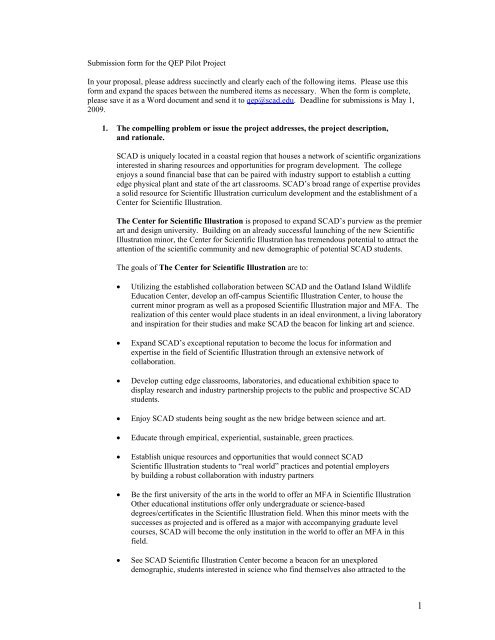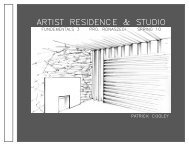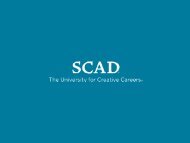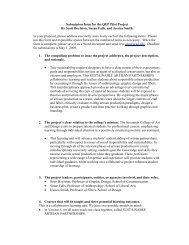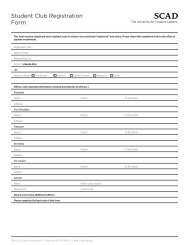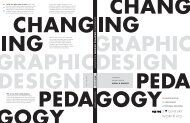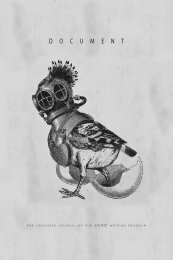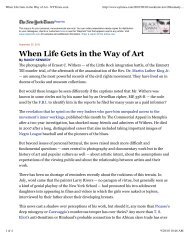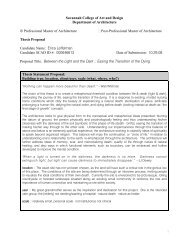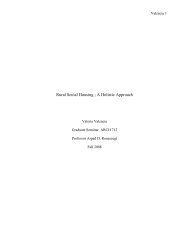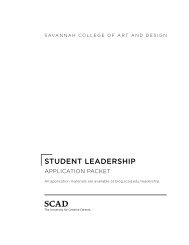Submission form for the QEP Pilot Project In your proposal, please ...
Submission form for the QEP Pilot Project In your proposal, please ...
Submission form for the QEP Pilot Project In your proposal, please ...
Create successful ePaper yourself
Turn your PDF publications into a flip-book with our unique Google optimized e-Paper software.
<strong>Submission</strong> <strong><strong>for</strong>m</strong> <strong>for</strong> <strong>the</strong> <strong>QEP</strong> <strong>Pilot</strong> <strong>Project</strong><br />
<strong>In</strong> <strong>your</strong> <strong>proposal</strong>, <strong>please</strong> address succinctly and clearly each of <strong>the</strong> following items. Please use this<br />
<strong><strong>for</strong>m</strong> and expand <strong>the</strong> spaces between <strong>the</strong> numbered items as necessary. When <strong>the</strong> <strong><strong>for</strong>m</strong> is complete,<br />
<strong>please</strong> save it as a Word document and send it to HUqep@scad.eduUH. Deadline <strong>for</strong> submissions is May 1,<br />
2009.<br />
1. The compelling problem or issue <strong>the</strong> project addresses, <strong>the</strong> project description,<br />
and rationale.<br />
SCAD is uniquely located in a coastal region that houses a network of scientific organizations<br />
interested in sharing resources and opportunities <strong>for</strong> program development. The college<br />
enjoys a sound financial base that can be paired with industry support to establish a cutting<br />
edge physical plant and state of <strong>the</strong> art classrooms. SCAD’s broad range of expertise provides<br />
a solid resource <strong>for</strong> Scientific Illustration curriculum development and <strong>the</strong> establishment of a<br />
Center <strong>for</strong> Scientific Illustration.<br />
The Center <strong>for</strong> Scientific Illustration is proposed to expand SCAD’s purview as <strong>the</strong> premier<br />
art and design university. Building on an already successful launching of <strong>the</strong> new Scientific<br />
Illustration minor, <strong>the</strong> Center <strong>for</strong> Scientific Illustration has tremendous potential to attract <strong>the</strong><br />
attention of <strong>the</strong> scientific community and new demographic of potential SCAD students.<br />
The goals of The Center <strong>for</strong> Scientific Illustration are to:<br />
<br />
<br />
<br />
<br />
<br />
<br />
<br />
<br />
Utilizing <strong>the</strong> established collaboration between SCAD and <strong>the</strong> Oatland Island Wildlife<br />
Education Center, develop an off-campus Scientific Illustration Center, to house <strong>the</strong><br />
current minor program as well as a proposed Scientific Illustration major and MFA. The<br />
realization of this center would place students in an ideal environment, a living laboratory<br />
and inspiration <strong>for</strong> <strong>the</strong>ir studies and make SCAD <strong>the</strong> beacon <strong>for</strong> linking art and science.<br />
Expand SCAD’s exceptional reputation to become <strong>the</strong> locus <strong>for</strong> in<strong><strong>for</strong>m</strong>ation and<br />
expertise in <strong>the</strong> field of Scientific Illustration through an extensive network of<br />
collaboration.<br />
Develop cutting edge classrooms, laboratories, and educational exhibition space to<br />
display research and industry partnership projects to <strong>the</strong> public and prospective SCAD<br />
students.<br />
Enjoy SCAD students being sought as <strong>the</strong> new bridge between science and art.<br />
Educate through empirical, experiential, sustainable, green practices.<br />
Establish unique resources and opportunities that would connect SCAD<br />
Scientific Illustration students to “real world” practices and potential employers<br />
by building a robust collaboration with industry partners<br />
Be <strong>the</strong> first university of <strong>the</strong> arts in <strong>the</strong> world to offer an MFA in Scientific Illustration<br />
O<strong>the</strong>r educational institutions offer only undergraduate or science-based<br />
degrees/certificates in <strong>the</strong> Scientific Illustration field. When this minor meets with <strong>the</strong><br />
successes as projected and is offered as a major with accompanying graduate level<br />
courses, SCAD will become <strong>the</strong> only institution in <strong>the</strong> world to offer an MFA in this<br />
field.<br />
See SCAD Scientific Illustration Center become a beacon <strong>for</strong> an unexplored<br />
demographic, students interested in science who find <strong>the</strong>mselves also attracted to <strong>the</strong><br />
1
visual arts. Science classes from middle school to high school, through to college and<br />
post graduate students will have exposure to <strong>the</strong> Center and its opportunities it offers <strong>for</strong><br />
<strong>the</strong>ir college education<br />
<br />
<br />
<br />
Research in <strong>the</strong> design and illustration techniques used in historical scientific Illustrations<br />
and <strong>the</strong> research showcased in an educational exhibition area <strong>for</strong> public viewing<br />
Provide public access to <strong>the</strong> work created in <strong>the</strong> Center’s programs to regional students<br />
K-12 and above.<br />
Provide additional internship opportunities <strong>for</strong> undergraduate and graduate students in<br />
scientific illustration through industry and related SCAD programs<br />
2. The project’s clear relation to <strong>the</strong> college’s mission<br />
The Savannah College of Art and Design exists to prepare talented students <strong>for</strong><br />
professional careers, emphasizing learning through individual attention in a positively<br />
oriented university environment.<br />
The following Scientific Illustration pilot project goals align closely with <strong>the</strong> mission<br />
statement. It will:<br />
<br />
<br />
<br />
<br />
Develop a center that will make SCAD <strong>the</strong> beacon <strong>for</strong> linking art and science in <strong>the</strong> study<br />
of scientific illustration, attracting a new demographic of talented students<br />
Establish a robust collaboration with industry partners to provide an exciting program<br />
that connects to “real world” practices, helping students to be exceptionally well prepared<br />
<strong>for</strong> careers in Scientific Illustration<br />
Educate through empirical, sustainable, green practices<br />
Provide an inspiring environment and observation laboratory that will surround<br />
<strong>the</strong> students, including a wildlife reserve, acres of conserved grounds, a wild<br />
animal reserve and salt marshes, all readily available <strong>for</strong> study. Empirical study<br />
and experiential learning will model student centered education practices.<br />
3. The project leaders, participants, entities, or agencies involved, and <strong>the</strong>ir roles.<br />
The Scientific Illustration Program was <strong>the</strong> brainchild of Professor Paul Hudson a highly<br />
experienced Scientific Illustrator teaching in <strong>the</strong> sequential arts department. The curriculum<br />
<strong>for</strong> this was explored and fur<strong>the</strong>r developed in collaboration with professor Don Rogers of <strong>the</strong><br />
Illustration Department and Kristie Bruzenak, professor in <strong>the</strong> department of Foundations<br />
Studies. As <strong>the</strong> idea developed collaboration expanded to include illustration professor, John<br />
Forrester, photography professor, Cathrine Cardarelli, and interactive game design professor,<br />
Greg Johnson. Professor Kristie Bruzenak promoted <strong>the</strong> idea of <strong>the</strong> program becoming a <strong>QEP</strong><br />
pilot <strong>proposal</strong>.<br />
The Center <strong>for</strong> Scientific Illustration will embed <strong>the</strong> following <strong><strong>for</strong>m</strong>s of collaboration:<br />
a. Faculty and course authors drawn <strong><strong>for</strong>m</strong> across <strong>the</strong> college, currently representing <strong>the</strong><br />
following departments:<br />
Sequential Art – Professor Paul Hudson<br />
Illustration – Professor Don Rogers and John Forester<br />
Foundation Studies – Professor Kristie Bruzenak<br />
Photography – Professor Ca<strong>the</strong>rine Cardarelli<br />
2
<strong>In</strong>teractive Design and Game Development - Greg Johnson<br />
c. Proposed future SCAD departmental collaborators would include:<br />
SCAD Animation Department<br />
Natural Science (<strong>the</strong> expansion of SCAD’s liberal arts program to include<br />
course such as biology is a possibility)<br />
Professional Writing<br />
SCAD Museum<br />
SCAD Exhibitions<br />
b. Current <strong>In</strong>dustry partners/collaborators:<br />
Oatland Island Educational Center<br />
A new program that allows students to study and interact with live animals under <strong>the</strong><br />
supervision of trained animal handlers has begun with great success in conjunction with<br />
<strong>the</strong> existing Constructive Animal Anatomy course. This new program af<strong>for</strong>ds students<br />
close proximity to a variety of animals to accurately sketch, paint, photograph, and film<br />
in conjunction with class lectures. Additional opportunities include access to flora<br />
specimens grown within <strong>the</strong> Center’s greenhouses that will be instrumental to <strong>the</strong><br />
botanical aspects all courses including lectures from professional botanists once <strong>the</strong><br />
program is initiated.<br />
Classrooms are being renovated and provided <strong>for</strong> <strong>the</strong> program<br />
<strong>In</strong>spiring environment and observation laboratory surround <strong>the</strong> students due to <strong>the</strong><br />
surrounding natural setting<br />
Access to land and marsh wildlife through <strong>the</strong> animal preserve and <strong>the</strong> Center’s<br />
pontoon boat<br />
Opportunities <strong>for</strong> student team projects that provide “real world” experiences <strong>for</strong><br />
students such as <strong>the</strong> process of research, design development, approval protocol and<br />
installation considerations<br />
University of Georgia Marine Education Center and Aquarium<br />
Observation, specimen and in<strong><strong>for</strong>m</strong>ation resources <strong>for</strong> student marine research<br />
Opportunities <strong>for</strong> student team projects that provide “real world” experiences <strong>for</strong><br />
students such as <strong>the</strong> process of research, design development, approval protocol and<br />
installation considerations<br />
Triebold Paleontology <strong>In</strong>c.<br />
Successful negotiations with Mike Triebold, director of <strong>the</strong> Dinosaur Resource Center in<br />
Woodland Park, Colorado, have yielded an extraordinary opportunity <strong>for</strong> our students in<br />
<strong>the</strong> field of Paleontology. For <strong>the</strong> first time, SCAD students will gain access to newlydiscovered<br />
fossils to study and reconstruct through Scientific Illustration’s applied<br />
anatomy. Casts of Dromaeosaurus albertensis, one of <strong>the</strong> rarest <strong>the</strong>ropods from <strong>the</strong><br />
American west and a close relative to Velociraptor is in route to Savannah in addition to<br />
Pteranodon Sternbergi, one of <strong>the</strong> largest flying creatures to grace of skies of planet earth.<br />
National Oceanic and Atmospheric Administration and <strong>the</strong> Skidaway <strong>In</strong>stitute of<br />
Oceanography<br />
<strong>In</strong>itial meetings and telephone conversations with Mike Sullivan, Director of External<br />
Affairs, and George Sedberry, superintendent of Gray’s Reef National Marine Sanctuary<br />
have revealed not only a substantial need <strong>for</strong> visuals to communicate <strong>the</strong> latest research<br />
by <strong>the</strong>se institutions, but have also created additional opportunities <strong>for</strong> our students to<br />
conduct field and visual research in Marine Biology. This would include <strong>the</strong> potential <strong>for</strong><br />
a “sea-going classroom” that would utilize funds awarded by <strong>the</strong> National Oceanic and<br />
Atmospheric Administration and <strong>the</strong> National Science Foundation <strong>for</strong> students to<br />
3
experience an unparalleled education aboard a research vessel at sea. Additionally,<br />
exploratory meetings have begun with local Dive Masters to conduct SCUBA<br />
certification <strong>for</strong> SCAD students that would allow science, photography, and illustration<br />
of Grey’s Reef off <strong>the</strong> coast of Georgia under <strong>the</strong> auspices of NOAA.<br />
c. Future <strong>In</strong>dustry Partners<br />
Memorial Health University Hospital – As <strong>the</strong> hospital expands it teaching program, <strong>the</strong><br />
possibility of collaborating to develop a degree in medical illustration, could be explored.<br />
4. Courses that will be taught and three potential learning outcomes.<br />
A full program of courses has been developed <strong>for</strong> <strong>the</strong> Scientific Illustration Minor. The minor<br />
was piloted this year, be<strong>for</strong>e <strong>the</strong> program was included in <strong>the</strong> catalog. <strong>In</strong> <strong>the</strong> fall quarter we<br />
had three students in one class, Drawing <strong>for</strong> Scientific Illustration. <strong>In</strong> <strong>the</strong> winter quarter, three<br />
courses in <strong>the</strong> minor were offered, Drawing <strong>for</strong> Scientific Illustration, Photography <strong>for</strong><br />
Scientific Illustration, and Applied Perspective. The student base expanded to eighteen<br />
students. <strong>In</strong> <strong>the</strong> fall, <strong>the</strong> minor will be listed in <strong>the</strong> catalog and three courses will be offered,<br />
<strong>In</strong>troduction to Scientific Illustration, Drawing <strong>for</strong> Scientific Illustration, and Photography <strong>for</strong><br />
Scientific Illustration. A full program plan <strong>for</strong> <strong>the</strong> major and <strong>the</strong> MFA has been written. The<br />
course lists, and descriptions <strong>for</strong> <strong>the</strong> Scientific Illustration major MFA program (to be<br />
proposed) are attached at <strong>the</strong> end of this <strong><strong>for</strong>m</strong>.<br />
The courses currently in place <strong>for</strong> <strong>the</strong> minor have <strong>the</strong> following course descriptions, goals and<br />
outcomes:<br />
UMinor Curriculum:<br />
Drawing <strong>for</strong> Scientific Illustration<br />
Drawing <strong>for</strong> Scientific Illustration will introduce students to <strong>the</strong> process of careful study and<br />
analysis of natural <strong><strong>for</strong>m</strong>s, systematic record keeping of field and studio studies, and <strong>the</strong><br />
application of <strong>the</strong>se studies in <strong>the</strong> development of <strong><strong>for</strong>m</strong>al illustrations.<br />
Applied Perspective Theory <strong>for</strong> Scientific Illustration<br />
The specific, and highly-specialized requirements of accurately depicting three-dimensional<br />
<strong><strong>for</strong>m</strong> onto a two-dimensional surface are thoroughly explored in this hand-on, step-by-step<br />
process of Perspective Theory. Students will fur<strong>the</strong>r gain both <strong>the</strong> verbal and visual<br />
communication tools necessary <strong>for</strong> a successful dialogue in <strong>the</strong> scientific community.<br />
Advanced Rendering Techniques <strong>for</strong> Scientific Illustration<br />
Scientific Illustrators use observational, technical, and aes<strong>the</strong>tic skills to portray a subject<br />
accurately. Accuracy and communication are essential. <strong>In</strong> this course students will learn to<br />
render <strong><strong>for</strong>m</strong>s both known and imagined, observed, and unobservable, from <strong>the</strong> micro to <strong>the</strong><br />
macro.<br />
<strong>In</strong>troduction to Scientific Illustration<br />
Scientific Illustration encompasses a broad range of subject matter and approaches. This<br />
course focuses on exposing students to <strong>the</strong> range of subject matter found in scientific<br />
illustration while emphasizing accuracy, communication, and aes<strong>the</strong>tic qualities. A variety of<br />
approaches will be explored, from <strong>the</strong> microscopic world to <strong>the</strong> global ecosystem.<br />
Photography <strong>for</strong> Scientific illustration<br />
Photography is a major tool of visual communication <strong>for</strong> Scientific Illustration. This course<br />
will introduce students to <strong>the</strong> photographic processes and equipment available that will<br />
support and fur<strong>the</strong>r <strong>the</strong>ir development as Scientific Illustrators.<br />
4
Digital Drawing and Design <strong>for</strong> Scientific Illustration<br />
The communication of complex scientific principles often requires multiple images, and <strong>the</strong><br />
ability to design and compose <strong>the</strong>se images <strong>for</strong> print as well as electronic media is essential to<br />
a scientific illustrator. This course will use a variety of software in <strong>the</strong> development and<br />
design of instructional material, both <strong>for</strong> print and electronic media.<br />
Digital Sculpting <strong>for</strong> Scientific Illustration<br />
This course is an exploration of <strong>the</strong> use of digital sculpting in scientific illustration. Topics<br />
covered include creating digital sculptures, syn<strong>the</strong>sizing various digital sculptures and<br />
illustrative materials into a coherent whole, and professional practices regarding <strong>the</strong> use of<br />
digital sculptures in <strong>the</strong> scientific illustration industry. Students will create innovative and<br />
original artwork <strong>for</strong> inclusion in a professional portfolio.<br />
ILLU 317 <strong>In</strong>troduction to Scientific Illustration<br />
Course Goals:<br />
Learn about <strong>the</strong> importance of accuracy and communication when illustrating<br />
scientific principles and <strong>the</strong> structure of <strong>the</strong> natural world.<br />
Experience various approaches to illustrating scientific subject matter, from<br />
microscopic to internal structure to global ecosystems.<br />
Gain exposure to <strong>the</strong> variety of specialties in scientific illustration.<br />
Course Outcomes:<br />
Demonstrate <strong>the</strong> ability to illustrate natural flora and fauna in an accurate and<br />
aes<strong>the</strong>tically pleasing manner.<br />
Demonstrate <strong>the</strong> ability to illustrate both visible and invisible (i.e., microscopic,<br />
internal) subject matter accurately.<br />
Demonstrate <strong>the</strong> ability to communicate scientific principles through illustration.<br />
Evaluate <strong>the</strong> goals of a given assignment and choose an appropriate technique and<br />
approach.<br />
Explain scientific in<strong><strong>for</strong>m</strong>ation through illustration.<br />
ILLU 240 Drawing <strong>for</strong> Scientific Illustration<br />
Course Goals:<br />
Experience <strong>the</strong> order and incredible complexities in natural <strong><strong>for</strong>m</strong>s.<br />
Learn to see <strong>the</strong> relationship between an object’s structure and its surface appearance<br />
Learn to analyze and record an object’s structure and details through close, careful<br />
observation, field studies and journal entries<br />
Learn to interpret in<strong><strong>for</strong>m</strong>ation gained and distill <strong>the</strong> complexities observed to more<br />
clearly communicate <strong>the</strong> essence of <strong>the</strong> object<br />
Understand interpreted structure as <strong>the</strong> architecture that supports surface planes and<br />
details<br />
Experience how details can be organized to clarify <strong>the</strong> communication of <strong>the</strong> <strong><strong>for</strong>m</strong> and<br />
character of an object.<br />
Gain exposure to scientific illustrations in history and <strong>the</strong> methods used to organize<br />
<strong>the</strong> compositions and communicate desired in<strong><strong>for</strong>m</strong>ation effectively<br />
Course Outcomes:<br />
Analyze a natural object and accurately describe its essential <strong><strong>for</strong>m</strong> in a line drawing<br />
from a variety of view points<br />
5
Build a field journal that effectively records observations of natural objects made<br />
outside of <strong>the</strong> studio as well as specimens brought inside <strong>the</strong> studio<br />
Use field and studio journal entries to develop refined illustrations of natural objects<br />
<strong>In</strong>terpret and distill <strong>the</strong> complexities observed in natural <strong><strong>for</strong>m</strong>s to more clearly<br />
communicate <strong>the</strong> essence of a subject<br />
Apply surface planes and details and to a linear structure in ways that enhance <strong>the</strong><br />
<strong><strong>for</strong>m</strong> and clearly communicate <strong>the</strong> identity of <strong>the</strong> object.<br />
Analyze scientific illustrations <strong>for</strong> <strong>the</strong>ir methods of organization and communication<br />
strategies.<br />
Apply <strong>the</strong> methods of organization and communication strategies found in <strong>the</strong>ir own<br />
work.<br />
ILLU 347 Dynamic Visualization <strong>for</strong> Scientific Illustration<br />
Course Goals:<br />
Accurately Locating Vanishing Points on <strong>the</strong> Horizon<br />
Multiple Eye Levels<br />
Multiple Vanishing Points<br />
One-Point Perspective<br />
Two-Point Perspective<br />
Three-Point Perspective<br />
Dividing Form and Space Accurately into Even Numbers<br />
Dividing Form and Space Accurately into Odd Numbers<br />
Placing Forms on Multiple Ground Planes<br />
Duplicating Form<br />
Scaling Form<br />
Plan <strong>Project</strong>ion<br />
Orthographic <strong>Project</strong>ions<br />
Casting Shadows From <strong>the</strong> Sun<br />
Casting Shadows From <strong>the</strong> Sun on Multiple Planes<br />
Casting Shadows From <strong>the</strong> Sun on Multiple Forms, Multiple Planes<br />
Casting Shadows From Artificial Light Source<br />
Casting Shadows From Artificial Light Source on Multiple Planes<br />
Casting Shadows From Artificial Light Source on Multiple Forms, Multiple Planes<br />
<strong>Project</strong>ing Reflections of Solid Objects<br />
<strong>Project</strong>ing Reflections of Solid Objects on Moving, or Ephemeral Forms<br />
Using Light as a Communication Tool <strong>for</strong> Form<br />
Atmospheric Perspective<br />
Perspective and Composition<br />
A thorough, step-by-step process <strong>for</strong> comprehension of <strong>the</strong> visible world through an<br />
applied Perspective Theory<br />
A variety of material and mediums pertinent to <strong>the</strong> accurate depiction of <strong><strong>for</strong>m</strong> in<br />
three-dimensional space projected onto a two-dimensional surface. These materials,<br />
techniques and mediums will be specific to <strong>the</strong> necessities of <strong>the</strong> Scientific Illustration<br />
field.<br />
Course Outcomes:<br />
Demonstrate a competent use, comprehension, and versatility of Applied Perspective<br />
Theory as it pertains to <strong>the</strong> accuracy needed in <strong>the</strong> Scientific Illustration field.<br />
Be able to evaluate, analyze, and be self-critical, of those specific visual<br />
communication concerns initiated by clients and art directors in <strong>the</strong> field of Scientific<br />
Illustration.<br />
6
Explain and articulate with authority those aes<strong>the</strong>tic choices made in <strong>the</strong> course of<br />
preparation of artwork to a variety of clients, from both within, and from outside <strong>the</strong><br />
scientific community.<br />
ILLU 245 Photography <strong>for</strong> Scientific Illustration<br />
Course Goals:<br />
Learn camera controls, f-stop, shutter speed, ISO and how <strong>the</strong>y effect image content.<br />
Learn <strong>the</strong> differences between film and digital capture.<br />
Learn basic design elements that are important to successful photographic imagemaking,<br />
in particular, selective focus.<br />
<strong>In</strong>vestigate alternative image capture using <strong>the</strong> digital scanner.<br />
Develop lighting skills ranging from <strong>the</strong> simple use of a white card to <strong>the</strong> more<br />
complex flash unit both on location and in <strong>the</strong> studio.<br />
Course Outcomes:<br />
Upon completing this course, students will be able to:<br />
Create both digital and analog images of <strong>the</strong>ir subjects.<br />
Demonstrate competence in field and in studio using both daylight and strobe<br />
equipment to best define <strong>the</strong>ir subjects.<br />
<strong>In</strong>terpret and distill <strong>the</strong> complexities observed in natural <strong><strong>for</strong>m</strong>s to more clearly<br />
communicate <strong>the</strong> essence of a subject.<br />
Apply <strong>the</strong> basic design elements unique to photography.<br />
Employ alternative capture methods as problem-solving tools.<br />
ILLU 323 Advanced Rendering Techniques <strong>for</strong> Scientific Illustration<br />
Course Goals:<br />
Learn about <strong>the</strong> historical aspect of scientific illustrative techniques to build a visual<br />
resource and style that effectively interprets <strong>the</strong> needs and requirements of a client or<br />
audience<br />
Experience a wide variety of techniques that students might ascertain <strong>the</strong> appropriate<br />
media to best communicate a variety of subject matter<br />
Gain exposure to those materials indicative to <strong>the</strong> field of scientific illustration<br />
Course Outcomes:<br />
Demonstrate mastery of rendering <strong><strong>for</strong>m</strong>s, textures, and patterns, using a variety of<br />
materials and techniques on a variety of substrates.<br />
Evaluate professional practices and methods used to create scientific illustrations<br />
utilizing traditional materials and techniques,<br />
Explain how <strong>the</strong> chosen principles of rendering techniques are used to best<br />
communicate <strong><strong>for</strong>m</strong>/function in <strong>the</strong> vocabulary of <strong>the</strong> Scientific Community<br />
ILLU 346 Digital Sculpting <strong>for</strong> Scientific Illustration<br />
Course Goals:<br />
Learn how to create digital scientific illustrations incorporating digital threedimensional<br />
elements.<br />
Gain exposure to professional practices in <strong>the</strong> use of 3d in <strong>the</strong> scientific illustration<br />
world.<br />
7
Explore relevant topics such as compositing, image manipulation, 3d rendering, 3d<br />
lighting, 3d modeling and texturing.<br />
Discuss current trends in <strong>the</strong> use of digital 3d in scientific illustration.<br />
Course Outcomes:<br />
Demonstrate a basic mastery of using digital 3d in <strong>the</strong>ir scientific illustrations.<br />
Evaluate professional practices and techniques used to create scientific illustrations<br />
utilizing digital 3d<br />
Explain how digital 3d artwork is used in <strong>the</strong> scientific illustration industry.<br />
Demonstrate an understanding of <strong>the</strong> methodology of using digital 3d to assist in <strong>the</strong><br />
creation of scientific illustrations.<br />
ILLU 349 Digital Drawing and Design <strong>for</strong> Scientific Illustration<br />
Course Goals:<br />
Learn specific drawing techniques that are commonly used in scientific illustration.<br />
Learn <strong>the</strong> essentials of page layout and labeling to maximize <strong>the</strong> communication<br />
value.<br />
Learn to organize and communicate in<strong><strong>for</strong>m</strong>ation in a multimedia <strong><strong>for</strong>m</strong>at.<br />
Experience <strong>the</strong> creation of instructional material in various media.<br />
Gain exposure to a variety of software packages commonly used in <strong>the</strong> field of<br />
scientific illustration.<br />
Course Outcomes:<br />
Demonstrate <strong>the</strong> ability to use computer software to create scientific illustrations.<br />
Demonstrate <strong>the</strong> ability to design a series of instructional illustrations, <strong>the</strong>n compose<br />
and label <strong>the</strong>m <strong>for</strong> print media.<br />
Demonstrate <strong>the</strong> ability to create a sequence of illustrations <strong>for</strong> electronic media.<br />
Demonstrate <strong>the</strong> ability to ga<strong>the</strong>r and syn<strong>the</strong>size in<strong><strong>for</strong>m</strong>ation through <strong>the</strong> development<br />
of a process journal.<br />
Evaluate <strong>the</strong> needs of a given audience and develop instructional material suited <strong>for</strong><br />
<strong>the</strong>m.<br />
Explain scientific concepts through print and electronic media.<br />
ILLU 347 Applied Color Systems <strong>for</strong> Wildlife/Field Studies<br />
Course Goals:<br />
Learn about <strong>the</strong> Fletcher Color Organizations and Control system and practice,<br />
Experience impressionist color approach to media techniques,<br />
Gain exposure to commonly used method and practice in creating scientific<br />
illustrations<br />
Course Outcomes:<br />
Demonstrate understanding and mastery of <strong>the</strong> Fletcher’s color concepts and color<br />
temperature concepts<br />
Evaluate <strong>the</strong> use of field studies (tones and color) within works,<br />
Explain how <strong>the</strong> Fletcher’s concepts or color temperature help create <strong>the</strong> look, <strong>the</strong><br />
design of <strong>the</strong> work with wildlife subjects.<br />
8
Scientific Illustration<br />
Major and MFA Programs<br />
Creating art through disciplined precision, <strong>the</strong> Scientific Illustrator has <strong>the</strong> ability to capture and illuminate<br />
<strong>the</strong> important essence of a subject, to interpret what is underneath or inside, reconstruct shards or pieces<br />
into a unified whole, idealize and emphasize, to recreate vitality of a living specimen, and through an<br />
in<strong><strong>for</strong>m</strong>ed imagination bring <strong>the</strong> viewer to new levels of understanding of <strong>the</strong> micro and macro worlds that<br />
surround us all. As art reflects culture, Scientific Illustration reflects <strong>the</strong> discoveries of science and<br />
technology.<br />
Scientific illustration is <strong>the</strong> combination of aes<strong>the</strong>tics and meticulous accuracy. It is a <strong><strong>for</strong>m</strong>al and codified<br />
<strong><strong>for</strong>m</strong> of communication that af<strong>for</strong>ds <strong>the</strong> student <strong>the</strong> opportunity to explore in a variety of media from <strong>the</strong><br />
pencil, paint, and clay, through both <strong>the</strong> telescope and microscope. <strong>In</strong> this field, <strong>the</strong> artist must also be<br />
aware of <strong>the</strong> viewers’ level of knowledge on <strong>the</strong> given subject and must relate <strong>the</strong> message in not only a<br />
logical sequence, but provide a true and complete image by simplifying or summarizing <strong>the</strong> subject<br />
according to <strong>the</strong> capacity of <strong>the</strong> audience or client to understand it. Emphasis is not only on visual clarity,<br />
but also on <strong>the</strong> final <strong><strong>for</strong>m</strong> that <strong>the</strong> work will be used, so an understanding of, and an ability to communicate<br />
with, those involved in <strong>the</strong> entire production and publication process is essential.<br />
Students who gravitate toward this field are those seeking an ideal fusion of <strong>the</strong>ir interests in art and<br />
science. Career opportunities abound <strong>for</strong> <strong>the</strong> Scientific Illustrator as <strong>the</strong>re is a tremendous proliferation of<br />
scientific in<strong><strong>for</strong>m</strong>ation that is now competing <strong>for</strong> an audience. Students will find careers waiting <strong>for</strong> <strong>the</strong>m in<br />
any and all of <strong>the</strong> sciences that require communication from scientist to colleague, teacher to student or<br />
research foundation to layman; this include opportunities in Medical Illustration, Earth Sciences, Botany,<br />
Wildlife Illustration, Mechanical Illustration, <strong>In</strong><strong><strong>for</strong>m</strong>ation Graphics, Natural Science Illustration,<br />
Cartography, Museum Exhibits, Astronomy Illustration, Archaeology, Anthropology, and Paleontology.<br />
UMajor Curriculum:<br />
Defining Reality: Survey, Aes<strong>the</strong>tics and Ethics in Scientific Illustration<br />
The vast field of scientific inquiry and <strong>the</strong> attempt to visualize <strong>the</strong> world and cosmos dates back to <strong>the</strong><br />
earliest historic record; this course will encapsulate <strong>the</strong> salient circumstances, personalities, and ethical<br />
considerations that have paved <strong>the</strong> way <strong>for</strong> those works worthy of emulation in <strong>the</strong> student’s chosen field of<br />
interest.<br />
Drawing <strong>for</strong> Scientific Illustration*<br />
Drawing <strong>for</strong> Scientific Illustration will introduce students to <strong>the</strong> process of careful study and analysis of<br />
natural <strong><strong>for</strong>m</strong>s, systematic record keeping of field and studio studies, and <strong>the</strong> application of <strong>the</strong>se studies in<br />
<strong>the</strong> development of <strong><strong>for</strong>m</strong>al illustrations.<br />
Applied Perspective Theory <strong>for</strong> Scientific Illustration*<br />
The specific, and highly specialized requirements of accurately depicting three-dimensional <strong><strong>for</strong>m</strong> onto a<br />
two-dimensional surface are thoroughly explored in this hand-on, step-by-step process of Perspective<br />
Theory. Students will fur<strong>the</strong>r gain both <strong>the</strong> verbal and visual communication tools necessary <strong>for</strong> a<br />
successful dialogue in <strong>the</strong> scientific community.<br />
9
<strong>In</strong>troduction to Sculpture <strong>for</strong> Scientific Illustration<br />
Students will be introduced to <strong>the</strong> materials and techniques of Scientific Illustration as expressed 3-<br />
dimensionally. Through a series of sculptural exercises, students will gain <strong>the</strong> basis of understanding of<br />
light and <strong><strong>for</strong>m</strong> as <strong>the</strong>y produce a organic and geometric sculptures.<br />
Advanced Rendering Techniques <strong>for</strong> Scientific Illustration*<br />
Scientific Illustrators use observational, technical, and aes<strong>the</strong>tic skills to portray a subject accurately.<br />
Accuracy and communication are essential. <strong>In</strong> this course students will learn to render <strong><strong>for</strong>m</strong>s both known<br />
and imagined, observed, and unobservable, from <strong>the</strong> micro to <strong>the</strong> macro.<br />
<strong>In</strong>troduction to Scientific Illustration*<br />
Scientific Illustration encompasses a broad range of subject matter and approaches. This course focuses on<br />
exposing students to <strong>the</strong> range of subject matter found in scientific illustration while emphasizing accuracy,<br />
communication, and aes<strong>the</strong>tic qualities. A variety of approaches will be explored, from <strong>the</strong> microscopic<br />
world to <strong>the</strong> global ecosystem.<br />
Photography <strong>for</strong> Scientific Illustration*<br />
Photography is a major tool of visual communication <strong>for</strong> Scientific Illustration. This course will introduce<br />
students to <strong>the</strong> photographic processes and equipment available that will support and fur<strong>the</strong>r <strong>the</strong>ir<br />
development as Scientific Illustrators<br />
Digital Sculpting <strong>for</strong> Scientific Illustration*<br />
This course is an exploration of <strong>the</strong> use of digital sculpting in scientific illustration. Topics covered include<br />
creating digital sculptures, syn<strong>the</strong>sizing various digital sculptures and illustrative materials into a coherent<br />
whole, and professional practices regarding <strong>the</strong> use of digital sculptures in <strong>the</strong> scientific illustration<br />
industry.<br />
*Existing courses<br />
Applied Color Systems <strong>for</strong> Wildlife/Field Studies*<br />
Rendering <strong>the</strong> panoply of nature may be daunting without <strong>the</strong> specific application of time-honored <strong>the</strong>ories<br />
of color. <strong>In</strong> this course, students will learn <strong>the</strong> various color concept tools to effectively communicate <strong>the</strong><br />
spectacle and texture of wildlife and <strong>the</strong>ir habitat.<br />
Digital Drawing and Design <strong>for</strong> Scientific Illustration*<br />
The communication of complex scientific principles often requires multiple images, and <strong>the</strong> ability to<br />
design and compose <strong>the</strong>se images <strong>for</strong> print as well as electronic media is essential to a scientific illustrator.<br />
This course will use a variety of software in <strong>the</strong> development and design of instructional material, both <strong>for</strong><br />
print and electronic media.<br />
Business Management and Portfolio <strong>for</strong> Scientific Illustration<br />
The Scientific Illustration field offers a unique set of business management opportunities and challenges.<br />
This course will provide <strong>the</strong> business tools <strong>for</strong> success in addition to allowing students access to working<br />
professionals, <strong>the</strong>ir studios, work habits, and business practices. Student’s portfolios are prepared,<br />
reviewed, and edited to create a body of work that will not only compete, but will lead in this expansive<br />
industry.<br />
UElectives/Concentrated Studies:<br />
Constructive Anatomy<br />
Constructive Human Anatomy*<br />
10
Students will learn <strong>the</strong> dynamics and <strong><strong>for</strong>m</strong> of <strong>the</strong> human body through sculptural observation and analytical<br />
drawing. Both <strong>the</strong> skeletal and muscular systems will be thoroughly explored.<br />
Constructive Animal Anatomy*<br />
This class is a sculptural overview of <strong>the</strong> variety of <strong><strong>for</strong>m</strong>s and functions in <strong>the</strong> animal kingdom. Students<br />
will construct <strong>the</strong> feline <strong><strong>for</strong>m</strong> in class and will develop a creature from <strong>the</strong>ir imagination bases on lessons<br />
learned from existing strategies and morphology.<br />
Constructive Anatomy of <strong>the</strong> Horse<br />
Through direct observation, sculptural ecorche, analytical drawing, lecture, and action analysis, students<br />
develop a thorough working knowledge of <strong>the</strong> <strong><strong>for</strong>m</strong> and dynamics of <strong>the</strong> horse.<br />
*Existing courses<br />
Constructive Head Drawing*<br />
Depicting accurately <strong>the</strong> human head represents specific challenges not only <strong>for</strong> <strong>the</strong> Scientific Illustrator,<br />
but <strong>for</strong> <strong>the</strong> commercial and fine artist as well; this course will follow a step-by-step process of<br />
understanding <strong>the</strong> primitive, planner, skeletal, and muscular <strong><strong>for</strong>m</strong>s through sculpture and analytical<br />
drawing.<br />
Constructive Drawing <strong>for</strong> <strong>the</strong> Hands and Feet*<br />
The specific visual considerations necessary <strong>for</strong> accurate depictions of <strong>the</strong> hands and feet are explored<br />
through sculptural observation, analytical drawing and empirical research.<br />
*Existing courses<br />
Botanical Arts<br />
<strong>In</strong>troduction to <strong>the</strong> Botanical Arts<br />
Along with a survey of <strong>the</strong> pioneers of Botanical Illustration, this course will introduce students to <strong>the</strong> wide<br />
variety of visual interpretations necessary <strong>for</strong> a carrier in <strong>the</strong> Botanical Arts.<br />
Form and Function in <strong>the</strong> Botanical Arts<br />
This is an in-depth, empirical exploration of <strong>the</strong> anatomy, <strong><strong>for</strong>m</strong>, and functions of <strong>the</strong> plant world. Students<br />
will grow, collect, and dissect <strong>the</strong>ir own specimens be<strong>for</strong>e observing through microscopes and offering<br />
visual solutions to specific design considerations.<br />
Painting Plants and Flowers<br />
The specific needs <strong>for</strong> rendering <strong>the</strong> botanical world in color are addressed through various mediums,<br />
techniques, and color systems.<br />
Field Studies <strong>for</strong> <strong>the</strong> Botanical Arts<br />
Self-directed studio experience <strong>for</strong> <strong>the</strong> dedicated and impassioned botanical illustrator. Students will be<br />
expected to generate publishable material and participate in a culminating portfolio review.<br />
Sculpting <strong>for</strong> Science<br />
Molding and Casting in <strong>the</strong> Field<br />
Students will learn <strong>the</strong> tools and craft of mold-making beginning with <strong>the</strong>ir own work in <strong>the</strong> studio, <strong>the</strong>n<br />
progressing to casting specimens and field impressions to fur<strong>the</strong>r <strong>the</strong>ir research and building an archive of<br />
specimens and reference.<br />
Sculpting from Wildlife<br />
Students will learn to capture with realism <strong>the</strong> dynamics of <strong><strong>for</strong>m</strong> and action in <strong>the</strong> animal kingdom.<br />
11
Students will be expected to sculpt directly from life as well as from <strong>the</strong>ir own references and observations<br />
from personal time with <strong>the</strong> animal be<strong>for</strong>e committing <strong>the</strong> magic of nature to clay.<br />
Sculpting <strong>for</strong> Production<br />
Building on previous skills, students will learn to develop a pipeline <strong>for</strong> production. Advanced detailing in<br />
wax and how to work in pieces will be emphasized, preparing students <strong>for</strong> current industry demands.<br />
Museum Dioramas<br />
<strong>In</strong>teractive design, sculptural perspective, and ergonomics are all challenging considerations when<br />
designing and constructing 3-dimensional exhibits <strong>for</strong> museums; this course will take students through <strong>the</strong><br />
step-by-step processes of this demanding discipline.<br />
Paleontological Studies<br />
Bringing Dinosaurs to Life Through Paleo-Reconstruction<br />
The anatomy, <strong><strong>for</strong>m</strong> and function of <strong>the</strong> prehistoric world are introduced to <strong>the</strong> student through a sculptural<br />
analysis of <strong>the</strong> skeletal, muscular, and morphology of ancient mammals and prehistoric <strong>the</strong>ropods.<br />
Illustrating <strong>for</strong> Paleontology<br />
An overview of <strong>the</strong> flora and fauna of <strong>the</strong> prehistoric world; from studies of <strong>the</strong> Sauropods and <strong>the</strong><br />
Theropods, from Paleoplants to Pterosaurs, students will research and illustrate <strong>the</strong> diversity of life and<br />
ecosystems of ancient Earth.<br />
Designing Paleontology Exhibits and Dioramas<br />
Students will solve <strong>the</strong> challenges introduced through 3-dimensional scaled-representations in a dynamic,<br />
in<strong><strong>for</strong>m</strong>ative, and interactive dioramas specific to <strong>the</strong> needs of paleontology museum exhibits.<br />
Team <strong>Project</strong>s in Paleontology<br />
Many of <strong>the</strong> projects associated with paleontology involve dynamic teamwork to accomplish visual goals,<br />
whe<strong>the</strong>r reconstructing a large dinosaur, mural, or diorama. This course will allow students to interact in a<br />
team environment bringing <strong>the</strong> past to life.<br />
Medical Illustration<br />
Illustrating Microbiology<br />
The micro-landscapes of <strong>the</strong> molecules, cells, and <strong>the</strong> mystery of DNA will be explored by students<br />
through <strong>the</strong> microscope, brush, and pencil in this introductory course of <strong>the</strong> worlds within.<br />
Veterinary Illustration<br />
Veterinary medicine has its own specific visual challenges <strong>for</strong> <strong>the</strong> Scientific Illustration student, and is<br />
addressed through empirical research, lecture, and direct observation using a wide variety of artistic<br />
mediums.<br />
Visualizing Gross Anatomy/Human Dissection Studies<br />
Using specimens of human bones and witnessing dissections side-by-side with medical students, <strong>the</strong><br />
empirical research necessary to lead <strong>the</strong> medical Illustration industry will be af<strong>for</strong>ded to <strong>the</strong> student to<br />
capitalize on landmark portfolio potential.<br />
Forensic Reconstruction<br />
12
Reconstructing <strong>the</strong> human face by way of FBI <strong><strong>for</strong>m</strong>ula and measurements using both sculpture and<br />
analytical drawing, <strong>the</strong> student will be introduced to this fascinating field so <strong>the</strong> dead can indeed tell <strong>the</strong>ir<br />
tale.<br />
Nature/Wildlife Illustration<br />
Illustrating The Life Underfoot: Entomology<br />
Students will collect, research, dissect, and observe through microscopes <strong>the</strong> amazing world of insects<br />
using a variety of mediums. Unique challenges such as illustrating iridescence, bioluminescence, and<br />
chitonous scales on butterfly wings are addressed.<br />
From Fur to Fea<strong>the</strong>rs: Illustrating <strong>the</strong> Patterns and Textures of Wildlife<br />
Students, through prolonged interaction, hands-on and direct observation of animals will explore <strong>the</strong><br />
ephemeral beauty and complexity of <strong>the</strong> outer integument of animals. Strategies of techniques and<br />
mediums will be applied to <strong>the</strong> specific visual needs of <strong>the</strong> specimen.<br />
Wildlife Field Research<br />
A prolonged observation and interaction with an animal of <strong>the</strong> student’s choosing will be required to solve<br />
<strong>the</strong> complexities associated with drawing/painting wildlife in nature. Special consideration will be given to<br />
environment, social hierarchy, bio-dynamics, and predator-prey relationships.<br />
Slime and Scales: Rendering Amphibians and Reptiles<br />
This is an opportunity <strong>for</strong> students to devote attention to illustrating this fascinating class of animalia in<br />
situ. Students will be expected to have prolonged interaction and keep observational field journals to<br />
facilitate final projects.<br />
Astronomy and Geo-Science Illustration<br />
The Solar Neighborhood: Illustrating <strong>for</strong> Planetary Geology<br />
The planetary landscapes of our Solar System are researched and explored through various mediums and<br />
techniques. Specific visual considerations such as atmospheric distortion, geophysical <strong>for</strong>ces, manned<br />
exploration, and <strong>the</strong> potential <strong>for</strong> life will be addressed, along with utilizing analogous geological<br />
<strong><strong>for</strong>m</strong>ations on Earth.<br />
Mind and Space: Illustrating Cosmology<br />
The specific and complex visual necessities of cosmology create extra demands on <strong>the</strong> Scientific Illustrator<br />
to visualize where a camera has yet to go; from <strong>the</strong> far reaches of <strong>the</strong> mind and space, <strong>the</strong>oretical physics,<br />
to <strong>the</strong> birth and death of universes.<br />
Geo-science; Illustrating Eden<br />
From <strong>the</strong> nuance and gossamer structure of clouds, <strong>the</strong> violence and dynamics of a volcanic eruption, to<br />
light refracting off of bodies of water and rainbows, planet Earth provides <strong>the</strong> Scientific Illustrator with a<br />
host of visual challenges. Students in this course will be introduced to a variety of appropriate materials and<br />
techniques to successfully render <strong>the</strong> panoply of Earth <strong><strong>for</strong>m</strong>s.<br />
Scientific Photography<br />
Field Photography <strong>for</strong> Scientific Illustration<br />
13
Photography on location requires a specific skill set, knowledge base, and equipment unique <strong>for</strong> <strong>the</strong><br />
delivery of visuals in <strong>the</strong> sciences; <strong>the</strong>se considerations are addressed as students take <strong>the</strong>ir photographic<br />
talents into different environmental settings and lighting conditions.<br />
Studio Photography <strong>for</strong> Scientific Illustration<br />
This course accentuates lighting systems and techniques <strong>for</strong> a variety of textures and <strong><strong>for</strong>m</strong>s <strong>for</strong> specimen<br />
documentation.<br />
Wildlife Photography<br />
Working with <strong>the</strong> Oatland Island Wildlife Center, learn <strong>the</strong> skills necessary to illuminate and photograph<br />
animals in <strong>the</strong>ir natural environment through interaction and observation in this living laboratory.<br />
Digital Sculpting and Animation<br />
<strong>In</strong>troduction to Maya <strong>for</strong> Scientific Illustration<br />
Digital Animation <strong>for</strong> Scientific Illustration<br />
Rendering in SolidWorks<br />
Digital Production <strong>for</strong> Legal and Forensic Applications<br />
Undersea Studies<br />
Underwater Photography<br />
Learning <strong>the</strong> demands and practices from professional underwater photographers, students will complete<br />
SCUBA certification in preparation <strong>for</strong> research opportunities with National Oceanic and Atmospheric<br />
Administration.<br />
Underwater Archaeology<br />
Students will dive and document on shipwrecks, caves, and underwater geological <strong><strong>for</strong>m</strong>ations in tandem<br />
with researchers from <strong>the</strong> National Oceanic and Atmospheric Administration and <strong>the</strong> Skidaway Oceanic<br />
<strong>In</strong>stitute.<br />
Underwater Specimen Collection <strong>for</strong> Illustrative Documentation<br />
From micro-invertebrates to whales, students will learn to illustrate and document <strong>the</strong> flora and fauna of <strong>the</strong><br />
alien worlds under <strong>the</strong> sea.<br />
55 required hours<br />
25 elective hours<br />
80 total hours<br />
MFA in Scientific Illustration<br />
Students in <strong>the</strong> MFA program will come with strong representational drawing, painting and sculpting skills<br />
paired with a passion <strong>for</strong> <strong>the</strong> natural world. <strong>In</strong>teraction with professional and business leaders in <strong>the</strong> field,<br />
participation in collaborative departmental projects, and intensive internship opportunities mark <strong>the</strong><br />
uniqueness of Scientific Illustration at SCAD.<br />
14
UMFA Curriculum:<br />
FIRST YEAR<br />
Issues in <strong>the</strong> Field (I-III)<br />
<strong>In</strong> this seminar class, students will discuss readings of import to <strong>the</strong> field and interact with industry<br />
professionals who will offer <strong>the</strong>ir unique perspectives on <strong>the</strong> business and practice of scientific illustration.<br />
Scientific Illustration Studio (I-III)<br />
Students determine a personal project goal <strong>for</strong> <strong>the</strong> quarter and are advised in <strong>the</strong>ir studios by visiting<br />
program professors and visiting artists. The project is <strong><strong>for</strong>m</strong>ally reviewed by <strong>the</strong> professor of record with a<br />
team of department faculty at midterm and <strong>the</strong> end of <strong>the</strong> quarter.<br />
Departmental <strong>Project</strong> (I-IV)<br />
<strong>Project</strong>s requested by scientific organizations will be reviewed by department faculty and selected <strong>for</strong> <strong>the</strong>ir<br />
fit to <strong>the</strong> program and <strong>the</strong> current student complex. Students will collaborate with <strong>the</strong>ir client, <strong>the</strong>ir student<br />
colleagues and <strong>the</strong>ir professors to implement and complete <strong>the</strong> project chosen. The business aspects of<br />
scientific illustration including presentation, <strong>the</strong> incorporation of signage, budgeting and more will be<br />
modeled and experienced.<br />
Drawing from Life (I-III)<br />
Students will be required to attend a single drawing session once per week to draw from human and animal<br />
<strong><strong>for</strong>m</strong>s, both live and specimen samples. Capturing characteristic movements, <strong><strong>for</strong>m</strong> and structure,<br />
<strong><strong>for</strong>m</strong>alization and design, as well as developing studies <strong>for</strong> reference, will be addressed.<br />
Issues in <strong>the</strong> Field (I-III) – 3 credits each quarter<br />
Scientific Illustration Studio (I-III)– 5 credits each quarter<br />
Departmental <strong>Project</strong> (I-III) – 5 credits each quarter<br />
Drawing From Life (I-III) – 2 credits each quarter<br />
45 credits<br />
SECOND YEAR<br />
Quarter 1<br />
Issues in <strong>the</strong> Field IV<br />
<strong>In</strong> this seminar class, students will discuss readings of import to <strong>the</strong> field and interact with industry<br />
professionals who will offer <strong>the</strong>ir unique perspectives on <strong>the</strong> business and practice of scientific illustration.<br />
Field or Teaching <strong>In</strong>ternship<br />
Students will select an internship study that reflects <strong>the</strong>ir professional goals.<br />
Departmental <strong>Project</strong> IV<br />
<strong>Project</strong>s requested by scientific organizations will be reviewed by department faculty and selected <strong>for</strong> <strong>the</strong>ir<br />
fit to <strong>the</strong> program and <strong>the</strong> current student complex. Students will collaborate with <strong>the</strong>ir client, <strong>the</strong>ir student<br />
colleagues and <strong>the</strong>ir professors to implement and complete <strong>the</strong> project chosen. The business aspects of<br />
scientific illustration will be modeled and experienced.<br />
Drawing from Life IV<br />
Students will be required to attend a single drawing session once per week to draw from human and animal<br />
<strong><strong>for</strong>m</strong>s, both live and specimen samples. Capturing characteristic movements, <strong><strong>for</strong>m</strong> and structure,<br />
<strong><strong>for</strong>m</strong>alization and design, as well as developing studies <strong>for</strong> reference, will be addressed.<br />
Issues in <strong>the</strong> Field (I-III) – 3 credits<br />
15
Field or Teaching <strong>In</strong>ternship - 5 credits<br />
Departmental <strong>Project</strong> (I-III) – 5 credits<br />
Drawing From Life (I-III) – 2 credits<br />
15 credits<br />
Quarters Three and Four<br />
Applied <strong>In</strong>stitute Collaboration (I and II)<br />
Students identify a specific project and demonstrate <strong>the</strong> support of an industry, organization or institute<br />
partner that will provide <strong>the</strong> means <strong>for</strong> realizing <strong>the</strong>ir project. The project will be documented with both a<br />
written <strong>the</strong>sis and physical evidence of <strong>the</strong> projects’ development and final <strong><strong>for</strong>m</strong>.<br />
Students will describe <strong>the</strong>ir Thesis <strong>Project</strong> plans by <strong>the</strong> end of <strong>the</strong> second quarter of <strong>the</strong>ir first year.<br />
Scientific Illustration faculty will review <strong>the</strong> <strong>proposal</strong>s, check <strong>the</strong> industry support, and guide students in<br />
<strong>the</strong> development of a successful <strong>proposal</strong>.<br />
30 credits each<br />
Total Program Credits - 90<br />
MA in Scientific Illustration<br />
This degree is designed <strong>for</strong> <strong>the</strong> science teacher who desires to become familiar with <strong>the</strong> methods and<br />
practice of scientific illustration.<br />
UMA Curriculum:<br />
Issues in <strong>the</strong> Field (I-III)<br />
<strong>In</strong> this seminar class, students will discuss readings of import to <strong>the</strong> field and interact with industry<br />
professionals who will offer <strong>the</strong>ir unique perspectives on <strong>the</strong> business and practice of scientific illustration.<br />
Scientific Illustration Studio (I-III)<br />
Students determine a personal project goal <strong>for</strong> <strong>the</strong> quarter and are advised in <strong>the</strong>ir studios by visiting<br />
program professors and visiting artists. The project is <strong><strong>for</strong>m</strong>ally reviewed by <strong>the</strong> professor of record with a<br />
team of department faculty at midterm and <strong>the</strong> end of <strong>the</strong> quarter.<br />
Departmental <strong>Project</strong> (I-IV)<br />
<strong>Project</strong>s requested by scientific organizations will be reviewed by department faculty and selected <strong>for</strong> <strong>the</strong>ir<br />
fit to <strong>the</strong> program and <strong>the</strong> current student complex. Students will collaborate with <strong>the</strong>ir client, <strong>the</strong>ir student<br />
colleagues and <strong>the</strong>ir professors to implement and complete <strong>the</strong> project chosen. The business aspects of<br />
scientific illustration including presentation, <strong>the</strong> incorporation of signage, budgeting and more will be<br />
modeled and experienced.<br />
Drawing from Life (I-III)<br />
Students will be required to attend a single drawing session once per week to draw from human and animal<br />
<strong><strong>for</strong>m</strong>s, both live and specimen samples. Capturing characteristic movements, <strong><strong>for</strong>m</strong> and structure,<br />
<strong><strong>for</strong>m</strong>alization and design, as well as developing studies <strong>for</strong> reference, will be addressed.<br />
Issues in <strong>the</strong> Field (I-III) – 3 credits each quarter<br />
Scientific Illustration Studio (I-III)– 5 credits each quarter<br />
16
Departmental <strong>Project</strong> (I-III) – 5 credits each quarter<br />
Drawing From Life (I-III) – 2 credits each quarter<br />
45 credits<br />
17


